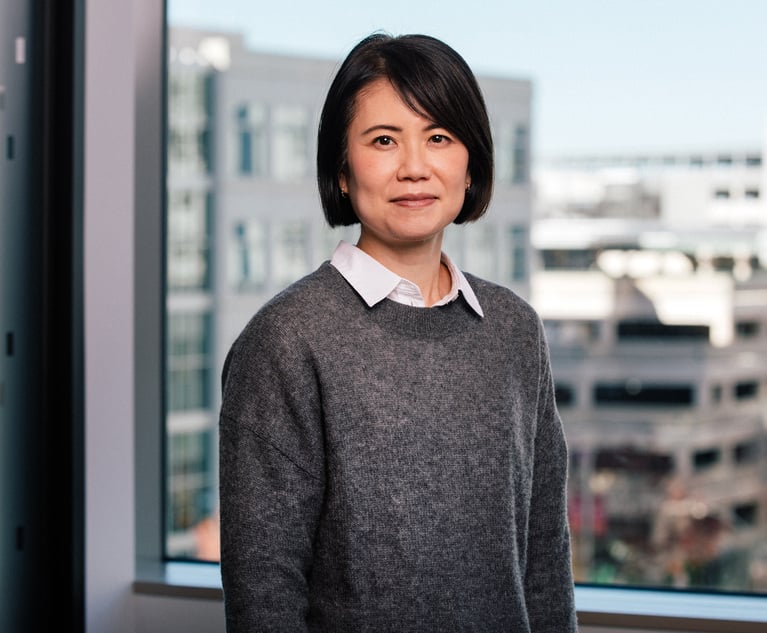Technology: Beware of Joint Ownership of IP Between Alliance Partners
Joint ownership can be fraught with unintended consequences.
January 27, 2011 at 07:00 PM
7 minute read
The original version of this story was published on Law.com
Technology and protectable intellectual property have become more and more central to business success and competitive advantage. As such, in the negotiation of strategic alliances and development agreements, the ownership and use of intellectual property created during the relationship can become a hot topic. Frequently someone will suggest a solution: Both parties should jointly own the IP. This is almost always a bad idea.
This article will describe how joint ownership works, illustrate the problems and unintended consequences, and provide some suggested alternatives. We will focus primarily on patents and copyrights, and to some degree on trade secrets.
How it's created:
Joint ownership can occur through the normal operation of the applicable IP laws based on the creative actions of the parties. Under U.S. law, any contributor to a patent claim owns an undivided interest in the whole patent–even a 1 percent contributor will be a joint owner with full rights to operate under the patent or grant nonexclusive licenses to others to do so. Similarly, if two or more entities contribute copyrightable material with the intention that their contributions be merged into inseparable or interdependent parts of a whole, then the U.S. Copyright Act grants each contributor an equal and undivided interest in the joint work.
Parties can also create joint ownership by agreement in the context of strategic alliances or development agreements.
The problems:
If the parties to a strategic alliance merely state that the created IP will be jointly owned, that leaves many important questions unanswered regarding their intentions. Do they expect to take actions to maintain the value (i.e., exclusivity) of the created IP? If so, who will file, prosecute and enforce the patents and copyrights? In addition, who decides whether inventions are maintained as trade secrets or are published through the patent application process? Remember that trade-secret value is generally destroyed by disclosure. Joint ownership will also mean that no one owner can grant an exclusive license without the consent of all the owners.
A second major problem with joint ownership is that, in the absence of an agreement among the parties, the default rules governing exploitation and enforcement of intellectual property vary depending on the type of IP. And, to further complicate the matter, these default rules also vary from country to country. Joint owners in different countries often have markedly different expectations regarding their respective rights in jointly owned IP.
The following examples will help clarify the scope of these problems.
Example Problem #1: Default rules under U.S. patent law
For jointly owned U.S. patents, the rules are as follows for exploitation (which includes both use by the joint owner itself as well as the granting of nonexclusive licenses to others):
o Each joint owner can exploit without permission of the others
o No duty to share proceeds
o Problem: Race to offer best deal to potential licensees and retain the benefits
For jointly owned U.S. patents, the rules are as follows for enforcement:
o All joint owners must join suit
o Problem: Race to agree with the infringer not to sue (e.g. grant a license and retain the benefits) You can see from the above that each joint owner will be at the mercy of the others. Some call this a “race to the bottom” because it is easy to grant licenses and reap the proceeds, but hard to sue infringers that are misusing the IP.
Example Problem #2: Differing treatment under U.S. law for exploiting patents and copyrights
Each joint owner can use the intellectual property itself and can grant nonexclusive licenses as follows:
o Patents: Without permission from the other owners or a duty to share the proceeds
o Copyrights: Without permission from the other owners, but with duty to share the proceeds
So, absent an agreement to the contrary, what happens with products such as software that are subject to both patent and copyright?
Example Problem #3: Differing treatment among U.S., U.K. and Japan
The following chart summarizes the default rules governing whether a joint owner needs the permission of its co-owners to exploit patents itself and to grant nonexclusive licenses to others.
Exploiting Patents
| By Co-owner | By License to 3rd Party | |
| U.K. | No permission | Need permission |
| Japan | No permission | Need permission |
The following chart summarizes the default rules governing whether a joint owner needs the permission of its co-owners to exploit copyrights itself and to grant nonexclusive licenses to others.
Exploiting Copyrights
This content has been archived. It is available through our partners, LexisNexis® and Bloomberg Law.
To view this content, please continue to their sites.
Not a Lexis Subscriber?
Subscribe Now
Not a Bloomberg Law Subscriber?
Subscribe Now
NOT FOR REPRINT
© 2025 ALM Global, LLC, All Rights Reserved. Request academic re-use from www.copyright.com. All other uses, submit a request to [email protected]. For more information visit Asset & Logo Licensing.
You Might Like
View All
Former Capital One Deputy GC Takes Legal Reins of AIG Spinoff

Legal Departments Dinged for Acquiescing to Rate Hikes That 'Defy Gravity'
4 minute read
Apple Disputes 'Efforts to Manufacture' Imaging Sensor Claims Against iPhone 15 Technology
Trending Stories
- 1Many LA County Law Firms Remain Open, Mobilize to Support Affected Employees Amid Historic Firestorm
- 2Stevens & Lee Names New Delaware Shareholder
- 3U.S. Supreme Court Denies Trump Effort to Halt Sentencing
- 4From CLO to President: Kevin Boon Takes the Helm at Mysten Labs
- 5How Law Schools Fared on California's July 2024 Bar Exam
Who Got The Work
Michael G. Bongiorno, Andrew Scott Dulberg and Elizabeth E. Driscoll from Wilmer Cutler Pickering Hale and Dorr have stepped in to represent Symbotic Inc., an A.I.-enabled technology platform that focuses on increasing supply chain efficiency, and other defendants in a pending shareholder derivative lawsuit. The case, filed Oct. 2 in Massachusetts District Court by the Brown Law Firm on behalf of Stephen Austen, accuses certain officers and directors of misleading investors in regard to Symbotic's potential for margin growth by failing to disclose that the company was not equipped to timely deploy its systems or manage expenses through project delays. The case, assigned to U.S. District Judge Nathaniel M. Gorton, is 1:24-cv-12522, Austen v. Cohen et al.
Who Got The Work
Edmund Polubinski and Marie Killmond of Davis Polk & Wardwell have entered appearances for data platform software development company MongoDB and other defendants in a pending shareholder derivative lawsuit. The action, filed Oct. 7 in New York Southern District Court by the Brown Law Firm, accuses the company's directors and/or officers of falsely expressing confidence in the company’s restructuring of its sales incentive plan and downplaying the severity of decreases in its upfront commitments. The case is 1:24-cv-07594, Roy v. Ittycheria et al.
Who Got The Work
Amy O. Bruchs and Kurt F. Ellison of Michael Best & Friedrich have entered appearances for Epic Systems Corp. in a pending employment discrimination lawsuit. The suit was filed Sept. 7 in Wisconsin Western District Court by Levine Eisberner LLC and Siri & Glimstad on behalf of a project manager who claims that he was wrongfully terminated after applying for a religious exemption to the defendant's COVID-19 vaccine mandate. The case, assigned to U.S. Magistrate Judge Anita Marie Boor, is 3:24-cv-00630, Secker, Nathan v. Epic Systems Corporation.
Who Got The Work
David X. Sullivan, Thomas J. Finn and Gregory A. Hall from McCarter & English have entered appearances for Sunrun Installation Services in a pending civil rights lawsuit. The complaint was filed Sept. 4 in Connecticut District Court by attorney Robert M. Berke on behalf of former employee George Edward Steins, who was arrested and charged with employing an unregistered home improvement salesperson. The complaint alleges that had Sunrun informed the Connecticut Department of Consumer Protection that the plaintiff's employment had ended in 2017 and that he no longer held Sunrun's home improvement contractor license, he would not have been hit with charges, which were dismissed in May 2024. The case, assigned to U.S. District Judge Jeffrey A. Meyer, is 3:24-cv-01423, Steins v. Sunrun, Inc. et al.
Who Got The Work
Greenberg Traurig shareholder Joshua L. Raskin has entered an appearance for boohoo.com UK Ltd. in a pending patent infringement lawsuit. The suit, filed Sept. 3 in Texas Eastern District Court by Rozier Hardt McDonough on behalf of Alto Dynamics, asserts five patents related to an online shopping platform. The case, assigned to U.S. District Judge Rodney Gilstrap, is 2:24-cv-00719, Alto Dynamics, LLC v. boohoo.com UK Limited.
Featured Firms
Law Offices of Gary Martin Hays & Associates, P.C.
(470) 294-1674
Law Offices of Mark E. Salomone
(857) 444-6468
Smith & Hassler
(713) 739-1250







